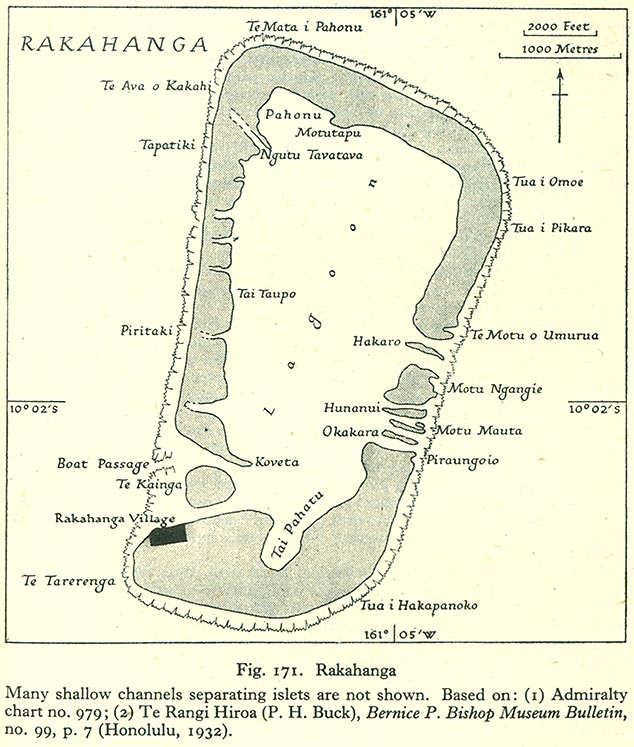|
Te Kainga
Te Kainga ("the Home") is one of 11 islands in the Rakahanga atoll of the Cook Islands. The island once served as the principal inhabited island of Rakahanga, but the settlement was moved to Rakahanga Island in the missionary era. The single village was shared by the atoll's four tribes, and was surrounded by five ''marae A ' (in New Zealand Māori, Cook Islands Māori, Tahitian), ' (in Tongan), ' (in Marquesan) or ' (in Samoan) is a communal or sacred place that serves religious and social purposes in Polynesian societies. In all these languages, the term a ...'': ''Punariku, Avarua, Huku-wananga, Mua'', and ''Variu''. References Rakahanga {{CookIslands-geo-stub ... [...More Info...] [...Related Items...] OR: [Wikipedia] [Google] [Baidu] |
Rakahanga
Rakahanga is part of the Cook Islands, situated in the central-southern Pacific Ocean. The unspoilt atoll is from the Cook Islands' capital, Rarotonga, and lies south of the equator. Its nearest neighbour is Manihiki which is just away. Rakahanga's area is . Its highest point is approximately 5 metres above sea level. The population was 83 in the 2016 Census of Population & Dwellings. Since 2014 Rakahanga's power has been 100% solar generated. The Rakahanga-Manihiki language differs from Cook Islands Maori. Geography There are four main islands and seven motus or islets in the Rakahanga lagoon. The northern island is divided into three: Tetukono in the north and northeast, Tetaha Kiraro in the west, and Paerangi in the southwest; while the southern island is Rakahanga. The motus are: on the east, Te Motu o Umurua, Akaro, Motu Ngangie, Huananui, Motu Mahuta and Motu Okakara; while on the southwest side the islet of Te Kainga guards the widest passage into the lagoon. Th ... [...More Info...] [...Related Items...] OR: [Wikipedia] [Google] [Baidu] |
Cook Islands
) , image_map = Cook Islands on the globe (small islands magnified) (Polynesia centered).svg , capital = Avarua , coordinates = , largest_city = Avarua , official_languages = , languages_type = Spoken languages , languages = , ethnic_groups = , ethnic_groups_year = 2016 census , demonym = Cook Islander , government_type = , leader_title1 = Monarch , leader_name1 = , leader_title2 = 's Representative , leader_name2 = Sir Tom Marsters , leader_title3 = Prime Minister , leader_name3 = Mark Brown , leader_title4 = President of the House of Ariki , leader_name4 = Tou Travel Ariki , legislature = Parliament , sovereignty_type = Associated state of New Zealand , established_event1 = Self-governance , established_date1 = 4 August 1965 , establi ... [...More Info...] [...Related Items...] OR: [Wikipedia] [Google] [Baidu] |
Rakahanga Island
Rakahanga Island is one of 11 islands in the Rakahanga atoll of the Cook Islands ) , image_map = Cook Islands on the globe (small islands magnified) (Polynesia centered).svg , capital = Avarua , coordinates = , largest_city = Avarua , official_languages = , lan .... It is on the southern edge of the lagoon, and the village of Nivano and the atoll's harbour are located on the island. References Rakahanga {{CookIslands-geo-stub ... [...More Info...] [...Related Items...] OR: [Wikipedia] [Google] [Baidu] |
Marae
A ' (in New Zealand Māori, Cook Islands Māori, Tahitian), ' (in Tongan), ' (in Marquesan) or ' (in Samoan) is a communal or sacred place that serves religious and social purposes in Polynesian societies. In all these languages, the term also means cleared and free of weeds or trees. generally consist of an area of cleared land roughly rectangular (the itself), bordered with stones or wooden posts (called ' in Tahitian and Cook Islands Māori) perhaps with ' (terraces) which were traditionally used for ceremonial purposes; and in some cases, a central stone ' or ''a'u''. In the Rapa Nui culture of Easter Island, the term ' has become a synonym for the whole marae complex. In some modern Polynesian societies, notably that of the Māori of New Zealand, the marae is still a vital part of everyday life. In tropical Polynesia, most marae were destroyed or abandoned with the arrival of Christianity in the 19th century, and some have become an attraction for tourists or archaeol ... [...More Info...] [...Related Items...] OR: [Wikipedia] [Google] [Baidu] |



